- Home
- Neal Stephenson
Some Remarks: Essays and Other Writing Page 4
Some Remarks: Essays and Other Writing Read online
Page 4
What do you see on the horizon with respect to money?
NEAL:
Actually, what’s interesting about money is that it doesn’t seem to change that much at all. It became fantastically sophisticated hundreds of years ago. Back before people knew about germs, evolution, the Table of Elements, and other stuff that we now take for granted, people were engaging in financial manipulations that seem quite modern in their sophistication. So if I had to take a wild guess—and believe me, it is a wild guess—I’d say that money and the way it works is going to be a constant, not a variable.
TRAVEL TIPS FOR MODERN PRIMITIVES?—BY TIMOTHY
Mr. Stephenson:
I greatly enjoy your travel stories, both non-fiction (Mother Earth, Mother Board) and in particular your descriptions of the Philippines in Cryptonomicon.
Can you share some of the ideas you’ve developed for savvy trav’lin? For instance, how do you deal with carrying sufficient technology (whatever level you deem this to be) while minimizing the risk of theft, breakage, or loss by other means? Do you dress native or carry your entire wardrobe? [And broader, do you travel with something close to nothing, picking up necessary items as the need arises? What do you not leave home without?]
Do you carry any sort of self-defense means in some places, and if so What and Where?
NEAL:
I haven’t done that much in the way of adventuresome travel lately. Even when I was doing so, I was never the sort of hardened third-world travel geek that you are imagining. The thing is that when you go to such countries you can typically get a room in a five-star hotel for less than a hundred bucks a night. At that rate, it’s easy to be a sellout and wallow in luxury. Staying in a dive is more romantic, but makes it harder to write. My excuse (if I need one) is that typically I’m not writing about backpackers and rural people in those countries; I’m writing about well-heeled expats whose natural habitat is airport bars and Shangri-La hotels. So that’s where I tend to end up.
Re “self-defense means”: I am reminded of a history book I read recently entitled Skeletons on the Zahara by Dean King. It is about some American sailors who get shipwrecked on the Atlantic Coast of Africa and go through hell. Eventually most of them make it back to freedom with the help of some Arab traders based in Morocco. These traders range across the Sahara on incredibly arduous journeys. They are just about the toughest and meanest hombres you can possibly imagine. They’ve been through all kinds of fights and ambushes, plagues of locusts, sandstorms, etc. and come out on top. Because of their success they have acquired camels, horses, and weapons: not only swords and daggers but rifles and shotguns too. After having rescued the Americans, these guys go out on another journey in the desert, and find themselves surrounded by a few dozen people who are wretched even by the standards of the Sahara: no animals, little in the way of clothing, and no weapons except for bags containing stones. A fight breaks out. The traders discharge their weapons and kill everyone they shoot at: maybe half a dozen. Then before they can reload they are all killed by flying stones.
The best “self-defense means” when you are surrounded by a hundred million people of some other culture is to avoid dangerous places and figure out some way to get along with the folks around you.
CONFIDENTIAL PROPOSAL, OFF SHORE DATA HAVEN (SCORE:5, FUNNY)—BY SLASHDREAD
Greetings to you in the name of the most high God, from my beloved country Nigeria.
I am sorry and I solicit your permission into your privacy. I am Barrister Leonardo Akume, lawyer to the late Dr. Koffi Abachus, a brilliant Nigerian mathematician.
My former client, late Dr. Koffi Abachus, died in a mysterious plane crash in the year 1994 on the way to a scientific conference to make an announcement of the utmost importance to mankind.
He was planning to present a paper regarding his extensive work on data storage. It is said the data storage device he had developed would be roughly ten times more secure compared to the latest quantum excyption techniques. The device was about the size of a steamer trunk and stored on a privately owned island close to the coast of Nigeria. Dr Koffi Abachus is also the King of the local tribe by heritage . . .
Oh well . . . Should there BE a data haven? If so, where?
NEAL:
Your proposition sounds quite reasonable. In order for me to provide you with the support that you need, I will need for you to wire $100,000 into my Swiss bank account . . .
NEAL:
At this point, that is probably a technical question that I might not be competent to answer. I can carry a gig of encrypted data on a thumb drive now, and it doesn’t cost much. Soon it’ll be smaller and cheaper. Millions of people in different countries carrying gigs of data on thumb drives, iPods, cellphones, etc. make for a pretty robust distributed data storage system. It is difficult to imagine how one could build a centralized, hardened facility that would be more robust than that. But perhaps there’s some technical or regulatory angle that I’m failing to appreciate here. I have not kept up to speed on this since Cryptonomicon.
BLUE ORIGIN—BY CONCERNED ONLOOKER
The Wikipedia lists you as a part-time advisor for Blue Origin [blueorigin.com], a company that is working to “develop a crewed, suborbital launch system.” What is it that you do for them and has the recent winning of the X-Prize by the SpaceshipOne team had any effect on Blue Origin’s plans? What are your visions of future private space flight?
NEAL:
Like Spock on the deck of the Enterprise, I sit in the corner and await opportunities to jump out and yammer about Science. Unlike Spock, I don’t have anyone reporting to me and I never get to sit in the captain’s chair and aim the phasers. This is probably good.
Though the X-Prize is cool and good, Blue Origin never intended to compete for it. Consequently, it has had no effect, other than destroying productivity whenever a SpaceShipOne flight is being broadcast.
As for my visions of future private space flight: here I have to remind you of something, which is that, up to this point in the interview, I have been wearing my novelist hat, meaning that I talk freely about whatever I please. But private space flight is an area where I wear a different hat (or helmet). I do not freely disseminate my thoughts on this one topic because I have agreed to sell those thoughts to Blue Origin. Admittedly, this feels a little strange to a novelist who is accustomed to running his mouth whenever he feels like it. But it is a small price to pay for the once-in-a-lifetime opportunity to become a minor character in a Robert Heinlein novel.
DO NEW PUBLISHING MODELS MAKE SENSE?—BY INFONAUT
Have you contemplated using any sort of alternative to traditional copyright for your works of fiction, such as a flavor of Creative Commons [creativecommons.org] license? Do you feel that making money as a writer and more open copyright are compatible in the long term, or do you think that writers like Lessig who distribute electronically via CC are merely indulging in a short-lived fad?
NEAL:
Publishing is a very ancient and crafty industry that existed and flourished before the idea of copyright even existed. When copyright came into existence, the publishing industry dealt with it and moved on. My suspicion is that everything that’s been going on lately will amount to a sort of fire drill that will force publishing to scurry around and make some new arrangements so that they can get back to making money for themselves and for authors.
You can use the brick-and-mortar bookstore as a way to think about this. There was a time maybe five years ago when many people were questioning whether brick-and-mortar bookstores were going to survive the onslaught of online retailers. Now, if you take the narrow view that a bookstore is nothing more than a machine that swaps money for books, then it follows that there’s no need for a physical store. But here we are five years later. Some bookstores have gone out of business, it’s true. But there are big, beautiful bookstores all over the place, with sofas and coffee bars and author appearances and so on. Why? Because it turns out that a bookstore is a lot
more than a machine that swaps money for books.
Likewise, if you think of a publisher as a machine that makes copies of bits and sells them, then you’re going to predict the elimination of publishers. But that’s only the smallest part of what publishers actually do. This is not to say that electronic distribution via CC is just a fad, any more than online bookstores are a fad. They will keep on going in parallel, and all of this will get sorted out in time.
Metaphysics in the Royal Society 1715–2010 (2012)
This philosophy is a gift of God to this old world, to serve as the only plank, as it were, which pious and prudent people may use to escape the shipwreck of atheism which now threatens us.
—LEIBNIZ, IN A 1669 LETTER TO THOMASIUS
Isaac Newton was slow to join to the Royal Society—in the Charter Book that lives in the Society’s vault, his signature does not appear until the ninth page—but by the second decade of the Eighteenth Century he had become its President. His unquestioned status as the greatest mind of his generation, combined with his political connections as Master of the Mint and his ruthlessness toward those he perceived as rivals, had given him an unusual degree of power. This he brought to bear against the only living person who could even hope to challenge his intellectual supremacy: Gottfried Wilhelm Leibniz, who despite being a foreigner (he was Hanoverian) had been made a Fellow of the Royal Society in 1673, largely in recognition for his invention of the Stepped Reckoner, a mechanical computer.
The contrasts between Newton and Leibniz were lavish. Newton seems to have had an entirely accurate sense of just how he compared to his contemporaries, and acted accordingly without concern for dusty precedents or the personal feelings of those who clung to them. When confronted with anything less than uncritical acceptance of his work, he lashed out and then secluded himself. He published rarely but ex cathedra, handing down nearly flawless treatises over which he had toiled for years or decades, perfectly organized into definitions, axioms, lemmas, and laws, framing a mathematical physics that could be used to explain past observations and to make verifiable predictions.
Leibniz was an accomplished courtier who maintained long friendships with the Electress of Hanover, the first Queen of Prussia, the sister-in-law of Louis XIV, and the future Queen Consort of England, while moonlighting, late in his career, for Peter the Great. He corresponded so heavily that scholars are still sorting through his unpublished papers today. In his philosophy he practiced an ecumenicism that in a lesser mind would strike us as suspicious or even craven. Leibniz seems never to have met a philosopher or a theologian he didn’t like, and his metaphysics developed out of an effort to harmonize the ancient thinking of (both) Plato and Aristotle with tenets of Christian and Jewish theology and with the “mechanical philosophy” the Royal Society had been created to champion. It is impossible to know precisely what he was thinking without perusing his vast legacy of papers. In effect, Leibniz’s philosophy ceased to exist at the moment he died. Since then, anyone who has wanted to know it has first had to reconstruct it, which is only possible for forensically inclined scholars, fluent in Latin, French, and German, and well versed in the history of Western philosophy, Christian theology, and Enlightenment science.
Given Leibniz’s stature as one of the great thinkers of Western history, one might expect that, as of the 350th anniversary of the founding of the Royal Society, all of his writings would long since have have been published, and that everything would be known about his philosophy. But the question of “what did Leibniz believe, and when did he believe it?” is unsettled and is the topic of current research and debate.
A squalid row over the origins of the calculus, which these two men had independently co-invented decades earlier, became the public face of the conflict, which is regrettable since it is not very interesting and since it reflects dreadfully on the combatants. Much more significant in the long run was a debate on topics that reach so deeply into the foundations of science that they are still discussed in our times. This broke the surface in the last year of Leibniz’s life, in an exchange of letters that has come to be known as the Leibniz-Clarke Correspondence.
The year was 1715, and because of two royal deaths (in England, Queen Anne; in Hanover, Electress Sophie), Princess Caroline of Brandenburg-Ansbach had just become the Princess of Wales. To the modern reader, Caroline seems less like a real historical personage than a plucky, clever, independent-minded heroine from some post-feminist historical novel. A noble but poor orphan, raised as a ward of the Prussian court, she was conversant with scientific topics of the day, largely because she had been tutored in them by Leibniz. She had married into the Hanoverian dynasty and had moved with it to London, where her father-in-law had been crowned King George I. The 69-year-old Leibniz, who had become unfashionable and, because of the dispute over the calculus, something of a political problem, had been left behind in Germany. He wrote a short letter to Caroline, warning her that religion was declining in England; that John Locke did not believe in the immortality of the soul; and that Sir Isaac Newton held to some strange views about the relationship between God and the physical universe.
Anyone who has blithely forwarded a private email to a corporate mailing list, with incalculable consequences, will recognize what happened next: Caroline made Leibniz’s letter known, and one Samuel Clarke stepped forward to rebut Leibniz’s charges. The result was a series of letters (five each by Leibniz and Clarke) over the course of a year, at which point Leibniz died. Clarke, though he had serious credentials in his own right both as theologian and scientist, was acting as a spokesman for Newton, and so the Correspondence can fairly be read as a debate between Leibniz and Newton.
In the opening round, the combatants practically trip over each other in their eagerness to remind the Princess that atheism is bad and that true natural philosophy in no way conflicts with religion. There is no reason to think that either of them is being disingenuous. The scientific revolution had created doubts about the existence of God, or at least the veracity of religious dogma, in the minds of many; but not Newton or Leibniz.
These concerns are dispensed with in a few paragraphs. The bulk of the Correspondence, which runs to about eighty pages, resembles an email exchange that devolves, as it goes on, into several distinct threads, each concerning a specific sub-topic. The correspondents begin to number their paragraphs (Leibniz’s fifth letter contains 130 of them), the better to keep track of all the rebuttals and counter-rebuttals. The over-arching theme is the relationship of God to the universe, and more specifically the universe as perceived, measured, and understood by scientists. Leibniz, in the universal manner of authors promoting their latest work, finds frequent occasion to mention his books Theodicy and Monadology. Even when he isn’t mentioning them by name, he is presenting arguments, and using terminology, derived from them.
My theme is the legacy of Leibniz’s metaphysics from the time of his death down to the present day, and so a direct summary of that system, based on the scholarship of latter-day researchers, will do better service than any attempt to untangle the points and counter-points in the Correspondence. The account presented below is patterned after the work of Christia Mercer of Columbia University. Her book Leibniz’s Metaphysics: Its Origins and Development, published in 2001 by Cambridge University Press, is a formidable work of forensic scholarship that can in no way be improved by my attempts to summarize it.
In 1661, at the age of 14, Leibniz had formed a resolution to embrace the new mechanical philosophy. For most natural philosophers of the era, this meant rejecting the Aristotelian worldview of the medieval schoolmen. As mentioned, though, Leibniz was an ecumenicist and a conciliator, and so for him it meant, rather, the beginning of a lifelong quest to reconcile certain select, precisely defined tenets of Aristotelian and Platonic thought with modern science.
In his metaphysical reasoning, Leibniz is at least as meticulous as is Newton in his mathematical physics. Bertrand Russell called Leibniz’s system “profound, cohere
nt, largely Spinozistic, and amazingly logical.” Newton, however, can verify his results by comparing them to observations while Leibniz is beholden to no one except Leibniz. By pure thinking, Leibniz fabricated a metaphysical system that could hardly be more at odds with that of Newton, or indeed any other person who attempts to think in a commonsensical way about how the world might work.
Where Newton’s work is grounded in Euclidean geometry, Leibniz begins with certain precepts that he takes to be axiomatic, such as the Principle of Sufficient Reason (nothing exists without a reason; there is no effect without a cause) and the Identity of Indiscernibles (two individual things cannot differ in number alone; it must be possible to explain why they are distinct based on some intrinsic difference). Newton developed calculus because it enabled him to solve problems in his theory of gravitation; Leibniz developed it as an outgrowth of his fascination with the problem of the Continuum, which asks how a line can be made up out of points, a span of time from instants, or a thought from the minute perceptions and endeavours of a mind. Just as Newton would not bother developing a physics that could not explain the fact that planets move in elliptical orbits, Leibniz had no time for any metaphysics that was incompatible with the transubstantiation of the Eucharist (both the Protestant and the Catholic versions!) and the incarnation of God in Christ. Much of the pick-and-shovel work of his Monadology came from a 1671 tract about the Incarnation of God.*

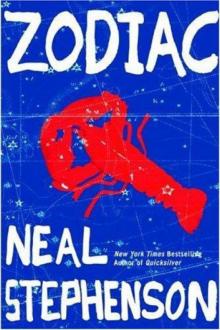 Zodiac: The Eco-Thriller
Zodiac: The Eco-Thriller The Mongoliad: Book One
The Mongoliad: Book One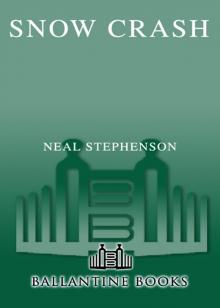 Snow Crash
Snow Crash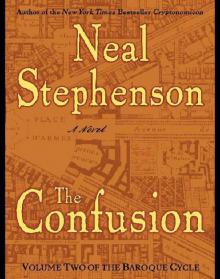 The Confusion: Volume Two of the Baroque Cycle
The Confusion: Volume Two of the Baroque Cycle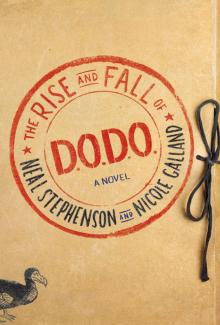 The Rise and Fall of D.O.D.O.
The Rise and Fall of D.O.D.O. The Diamond Age: Or, a Young Lady's Illustrated Primer
The Diamond Age: Or, a Young Lady's Illustrated Primer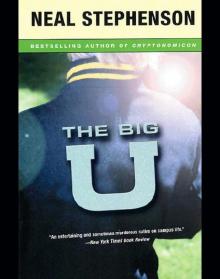 The Big U
The Big U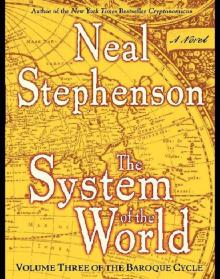 The System of the World: Volume Three of the Baroque Cycle
The System of the World: Volume Three of the Baroque Cycle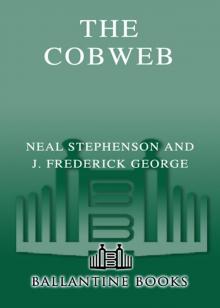 The Cobweb
The Cobweb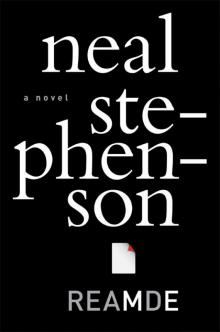 Reamde
Reamde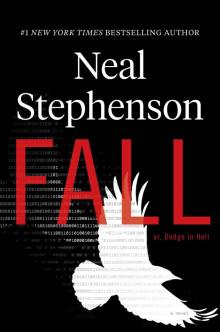 Fall; or, Dodge in Hell
Fall; or, Dodge in Hell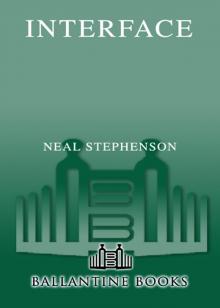 Interface
Interface Quicksilver
Quicksilver The Mongoliad: Book Three
The Mongoliad: Book Three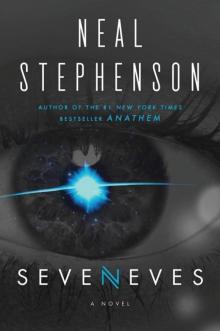 Seveneves
Seveneves Atmosphæra Incognita
Atmosphæra Incognita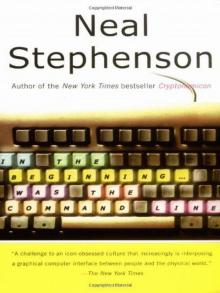 In the Beginning...Was the Command Line
In the Beginning...Was the Command Line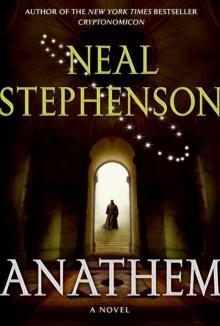 Anathem
Anathem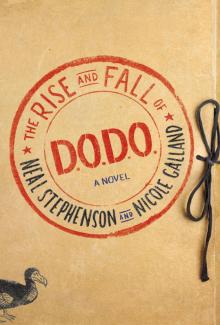 The Rise and Fall of D.O.D.O.: A Novel
The Rise and Fall of D.O.D.O.: A Novel The Mongoliad: Book Two
The Mongoliad: Book Two Diamond Age or a Young Lady's Illustrated Primer
Diamond Age or a Young Lady's Illustrated Primer THE System OF THE WORLD
THE System OF THE WORLD The Mongoliad: Book One tfs-1
The Mongoliad: Book One tfs-1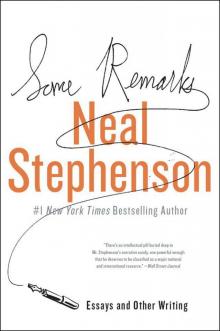 Some Remarks: Essays and Other Writing
Some Remarks: Essays and Other Writing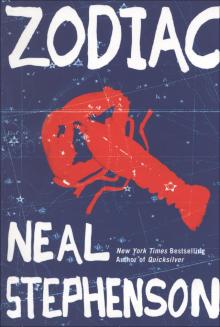 Zodiac
Zodiac Spew
Spew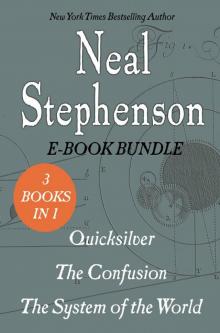 The Baroque Cycle: Quicksilver, the Confusion, and the System of the World
The Baroque Cycle: Quicksilver, the Confusion, and the System of the World The Diamond Age
The Diamond Age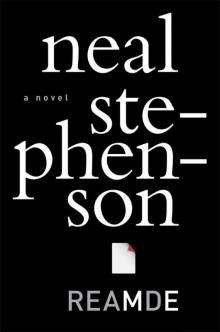 Reamde: A Novel
Reamde: A Novel In the Kingdom of Mao Bell
In the Kingdom of Mao Bell Mother Earth Mother Board
Mother Earth Mother Board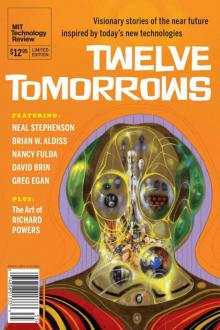 Twelve Tomorrows - Visionary stories of the near future inspired by today's technologies
Twelve Tomorrows - Visionary stories of the near future inspired by today's technologies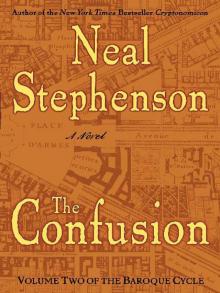 The Confusion
The Confusion The Great Simoleon Caper
The Great Simoleon Caper The Mongoliad: Book Three tfs-3
The Mongoliad: Book Three tfs-3